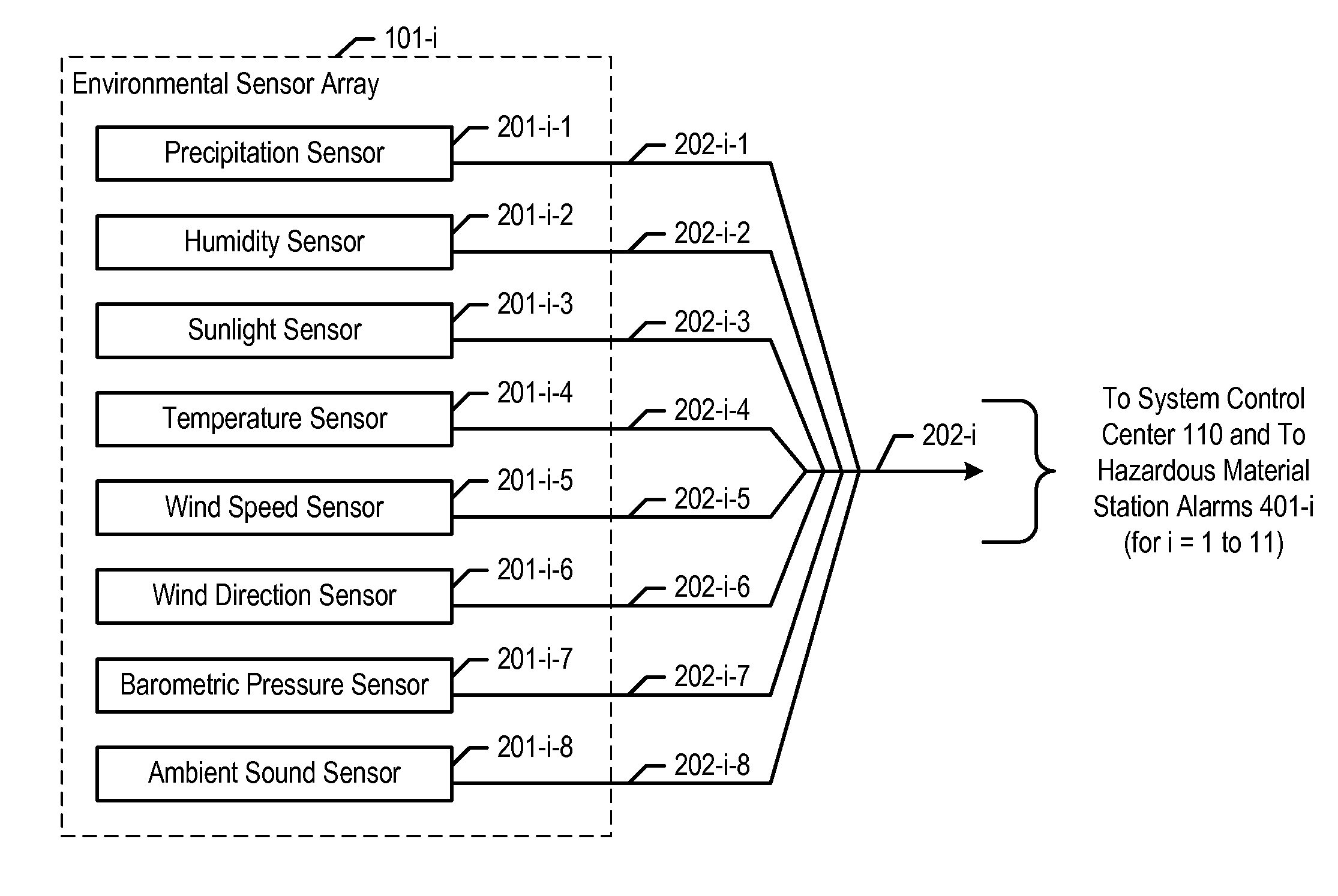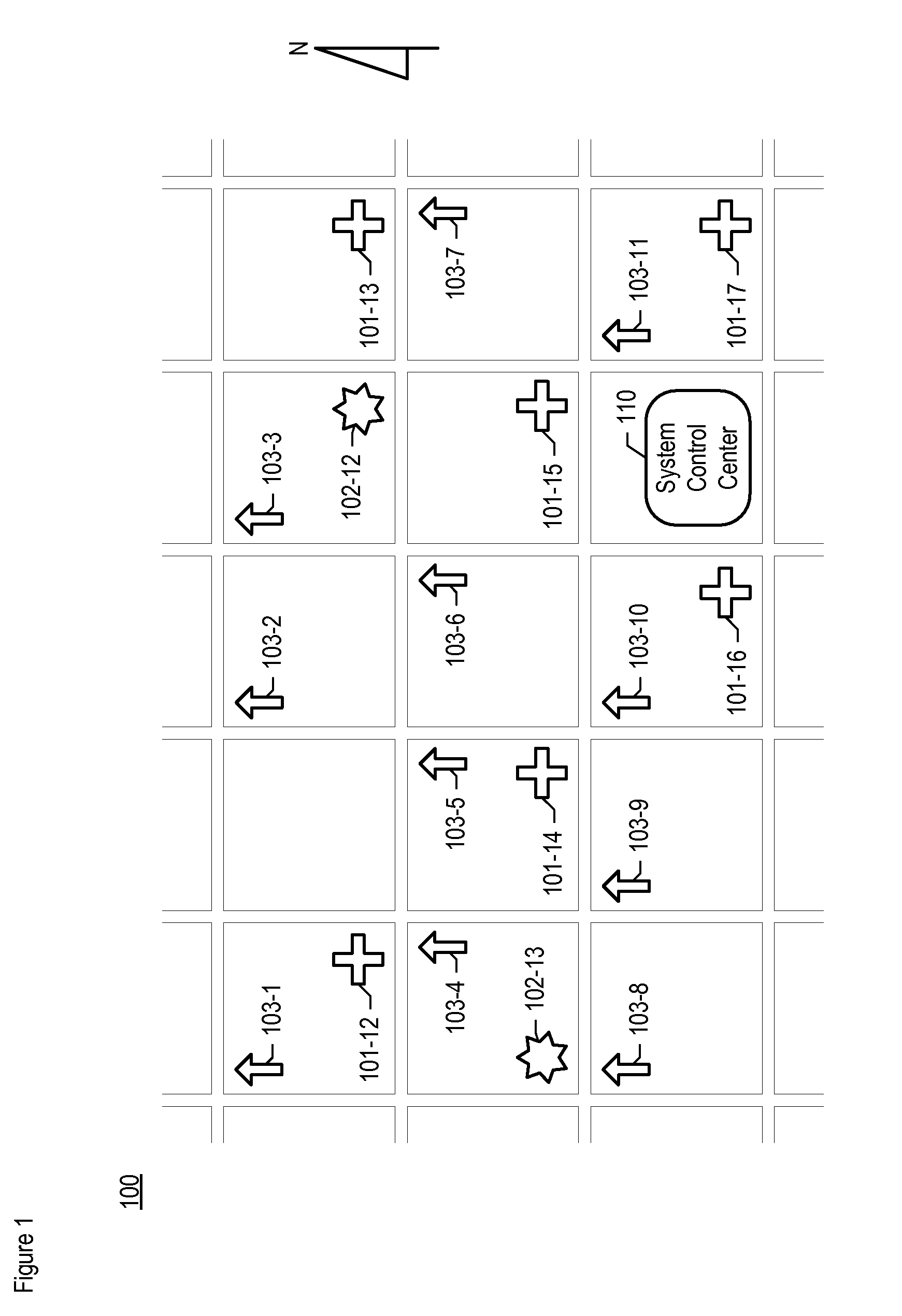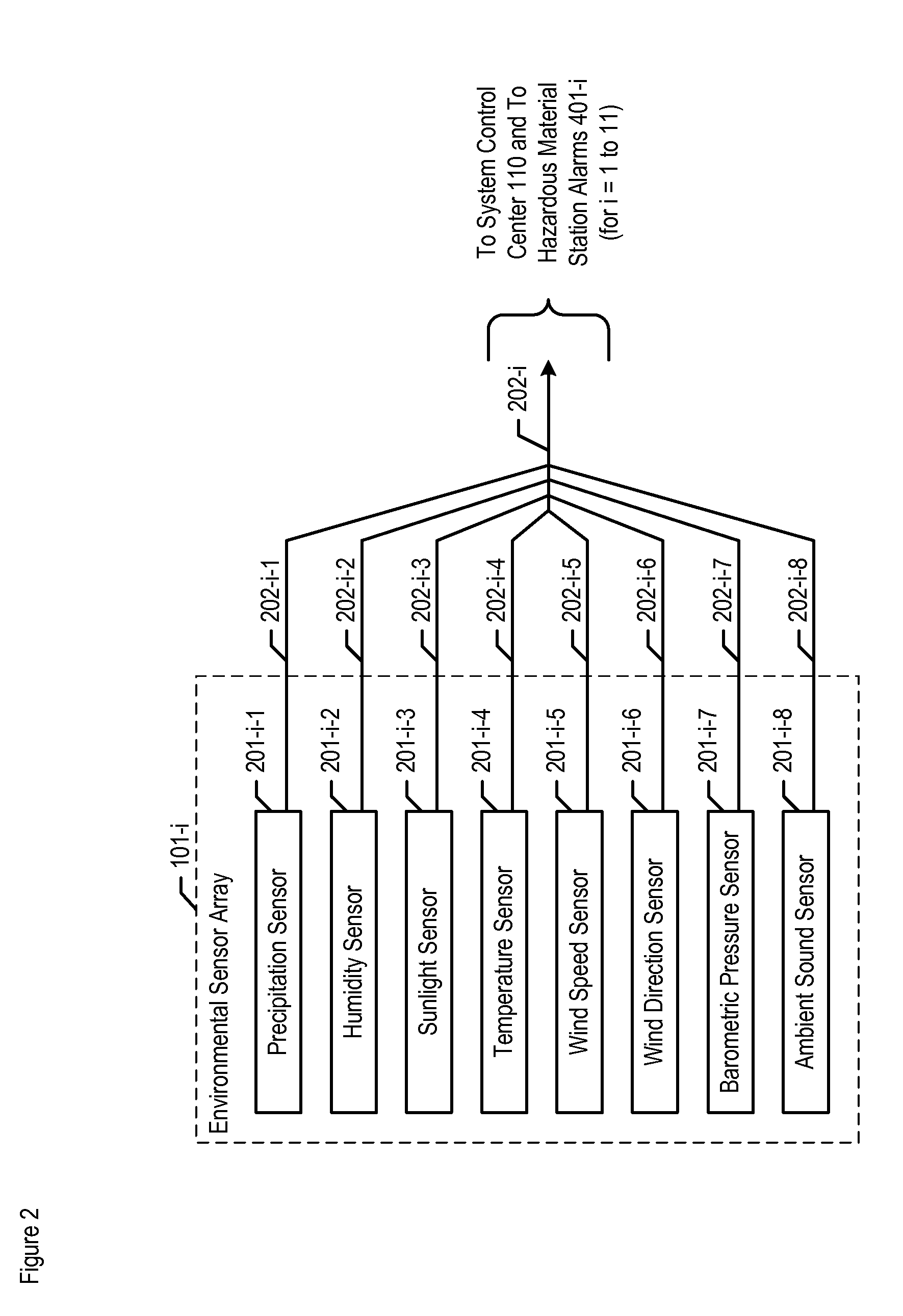Chemical, biological, radiological, and nuclear weapon detection system comprising array of spatially-disparate sensors and environmental acuity
a detection system and spatial dispersion technology, applied in the field of civil defense, can solve the problems of government failing to inform the public, etc., and achieve the effect of gaining and maintaining quickly and accurately informing the public, and losing the respect and confidence of the citizenry
- Summary
- Abstract
- Description
- Claims
- Application Information
AI Technical Summary
Benefits of technology
Problems solved by technology
Method used
Image
Examples
Embodiment Construction
[0021]FIG. 1 depicts a city map and the location of the salient components of the illustrative embodiment of the present invention on that map. The illustrative embodiment comprises:[0022]i. seventeen (17) spatially-disparate environmental sensor arrays 101-1 through 101-17,[0023]ii. thirteen (13) spatially-disparate video camera clusters 102-1 through 102-13,[0024]iii. eleven (11) spatially-disparate hazardous material detection stations 103-1 through 103-11, and[0025]iv. system control center 110. Environmental sensor arrays 101-1 through 101-11 and video camera clusters 102-1 through 102-11 are not distinctly shown in FIG. 1 because they are co-located with and contained within hazardous material detection stations 103-1 through 103-11, respectively.
[0026]Environmental sensor arrays 101-1 through 101-17, video camera clusters 102-1 through 102-13, and hazardous material detection stations 103-1 through 103-11 are deployed throughout city 100 to enable the comprehensive environmen...
PUM
 Login to View More
Login to View More Abstract
Description
Claims
Application Information
 Login to View More
Login to View More - R&D
- Intellectual Property
- Life Sciences
- Materials
- Tech Scout
- Unparalleled Data Quality
- Higher Quality Content
- 60% Fewer Hallucinations
Browse by: Latest US Patents, China's latest patents, Technical Efficacy Thesaurus, Application Domain, Technology Topic, Popular Technical Reports.
© 2025 PatSnap. All rights reserved.Legal|Privacy policy|Modern Slavery Act Transparency Statement|Sitemap|About US| Contact US: help@patsnap.com



